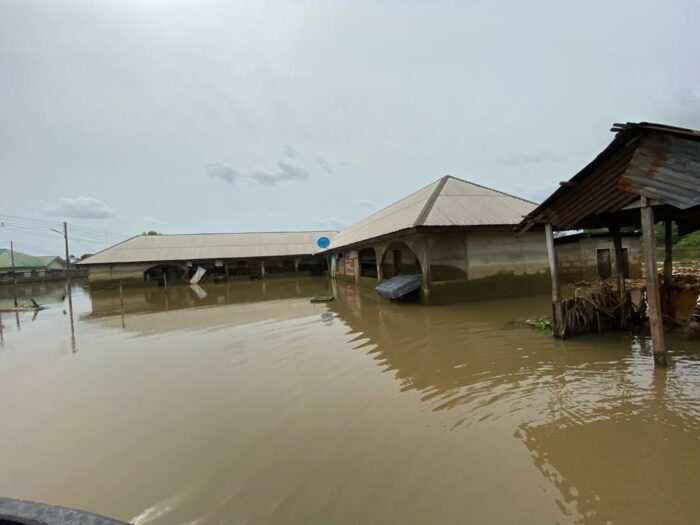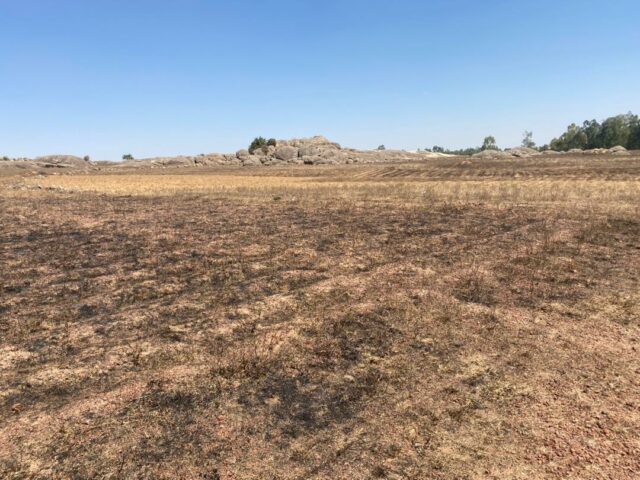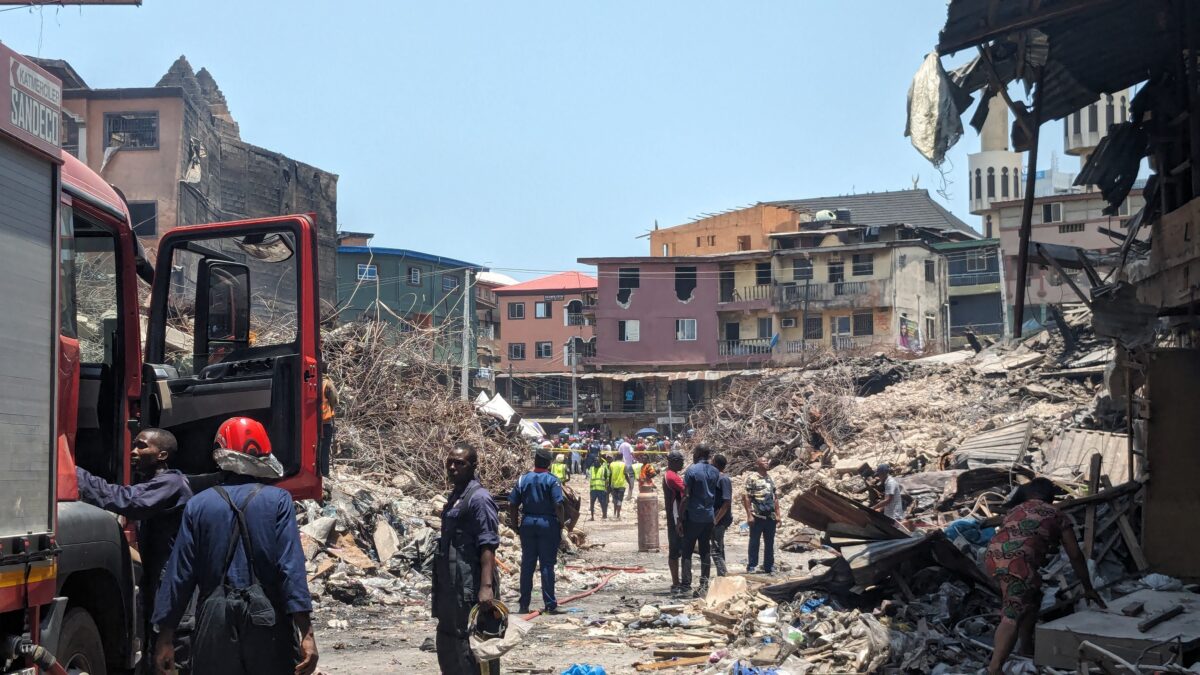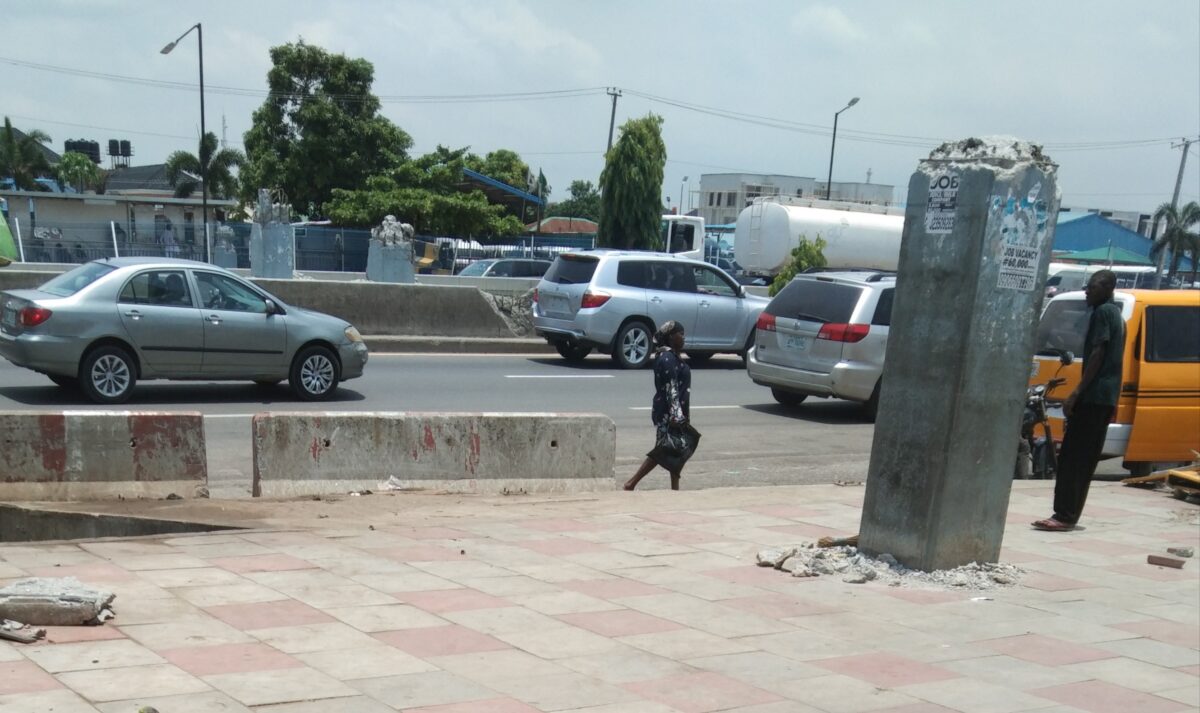In September, a ravaging flood submerged some areas in Delta State, destroying many properties and halting the people’s lives in a grimmer fashion than it did in 2012. But apart from forcing many people out of their homes, the flood left its victims with unmistakable signs of poverty and unprecedented hardship. FIJ’s EMMANUEL UTI visited some of these communities:
Between February and March 2022, Emmanuel Onya manually cultivated cassava stems on seven acres belonging to his family in Obuiwe. His plantation blossomed into lush green stalks, and he looked forward to harvesting them someday. Today, however, the outlook of his farmland did not reflect the eight months of labour he poured into it. Nature turned against him.
With his farm completely submerged in water, Onya knew he had nothing to show for his time and effort on the farm. He estimated that had he reaped the fruit of his labour, he would have been worth N2 million. But this was a height he could no longer attain.
“It all started in late September. Without a sign, the flood took over my farm, and I could not even rescue a pin,” Onya told FIJ. “Before the flood receded, my cassava tubers had rotted away. I could not save them. The flood was so powerful that until now, I cannot exactly locate my farmland.”
FLOOD OF DESTRUCTION
Intense rainfall at an unprecedented rate in September, coupled with the opening of the Lagdo Dam in northern Cameroon, spurred the heavy flooding in Delta State, and, by extension, Nigeria. Far more grievous than the 2012 flood, the 2022 disaster has displaced more than 2.5 million people.

In Delta State alone, the flood affected 19 of the 25 local government areas (LGAs), rendered at least 10,611 households homeless, destroyed property worth millions and washed away hectares of farmlands.
In May, the Nigeria Hydrological Services Agency (NIHSA) predicted in its 2022 Annual Flood Outlook (AFO) that 233 LGAs in 32 states of the federation and the FCT fell within the highly probable flood risk areas, with Delta State being one of the highly probable flood risk states.
However, rather than both the federal and state governments taking proactive measures to mitigate the flood’s effects, little was done. After the deluge however, the National Emergency Management Agency (NEMA) described the situation as “beyond control”.
SACKED BY HEAVY FLOOD
Otuya Abanim, a Kwale mobile security staffer, stood alone on the dry land at Afieze Junction in Kwale. The flood and the overflowing River Niger had overtaken both sides of the road, thus producing a pool of water large enough for boats and canoes to navigate to nearby settlements.
A horde of homeless people with different edible items and luggage were trooping in from the Afieze junction to other communities, fully submerged by the floord, to gauge the water level in their now abandoned houses.
Abanim was among the microscopic minority who took the state government’s warning of the then-impending flood with caution. He said he and other educated members of the community implored other villagers to take heed of the government’s directive, but not everyone believed him.
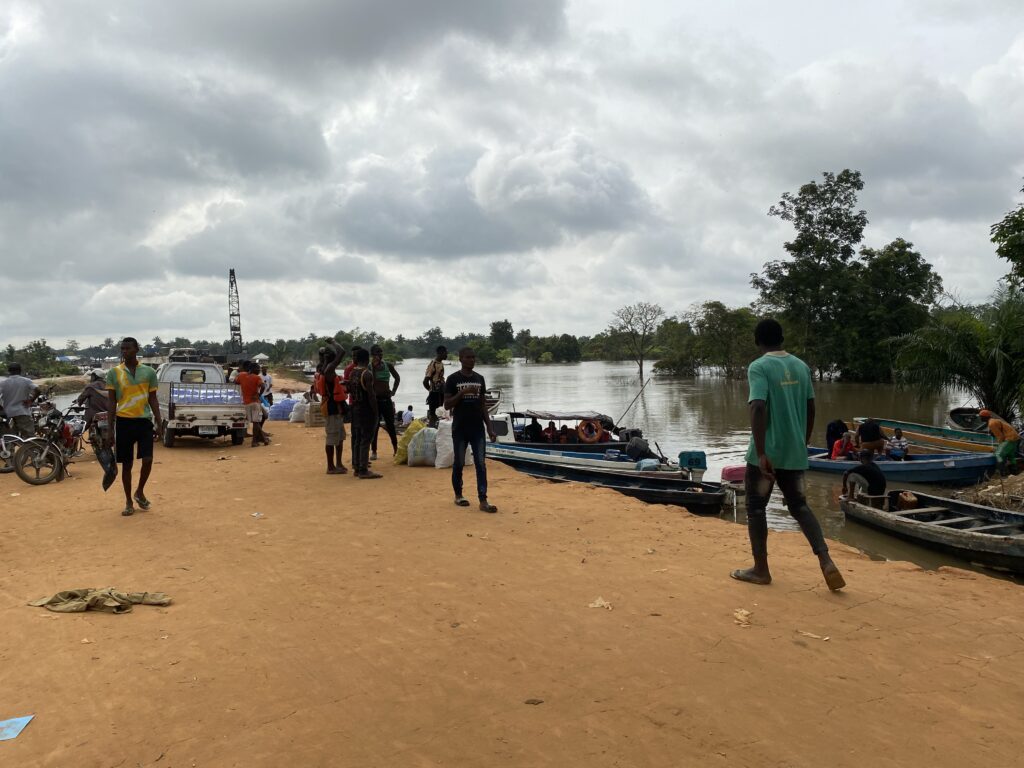
Before the devouring water found its way to Beneku in October, Abanim and his family had safely moved all of their belongings and found a new place to stay until the flood was over.
“This flood is worse than the one we suffered in 2012, my brother,” he stated. “Except for individuals living on the higher floors of multi-story buildings, Beneku is devoid of life as I speak. The water has reached the roofs of our homes.
“When the waters arrived, it could not affect the prepared. Those who stayed back lost their property and swam their way out to save their lives.”
SUBMERGED
Beneku’s junction was littered with many wet cushioned chairs. The owners abandoned them to the sweltering heat. Because the street was the only entirely dry terrain in the town, motorcycles, jerry cans, and household objects such as refrigerators and televisions were abandoned there. There were tarps and canopies everywhere, and clothes were strewn across the roadway. There were indications that the locals had returned to using firewood for cooking.
As this reporter sailed around the town – a 30-minute voyage – he learned that not a single residence had escaped the grievous baptism of the flood. Throughout the voyage, the captain of the boat echoed, “You arrived extremely late.”
Although the flood was subsiding at the time, visible signs of the water level on the community’s walls and gates showed one would need to be seven feet tall to have their head above the water when the flood arrived.
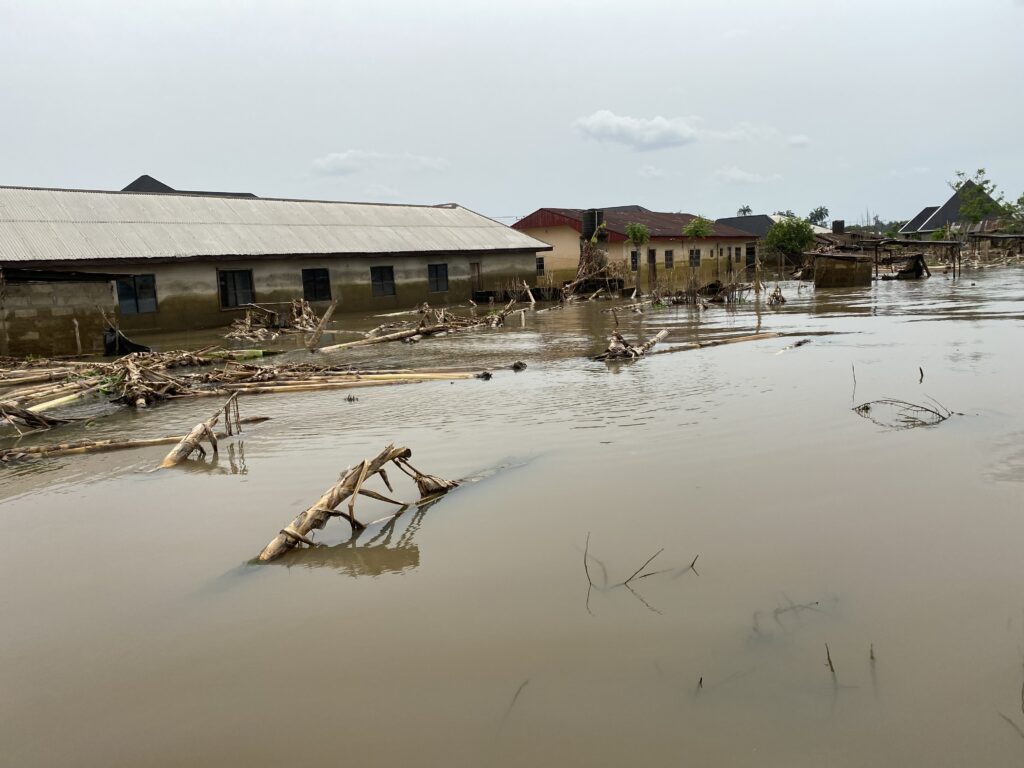
The inner streets were completely quiet. There was no one in sight. The community’s schools, stores and churches had been temporarily suspended. Undoubtedly, the water besieged the city until its inhabitants gave up. However, underneath the water, lay buildings, fields, streets and dunes awaiting human occupation.
The lack of completely dry ground in the town compelled those who remained to accept communal life. Everyone became their brother’s keeper. They pooled all available resources, including aid supplies from non-governmental organisations. They were looking out for one another.
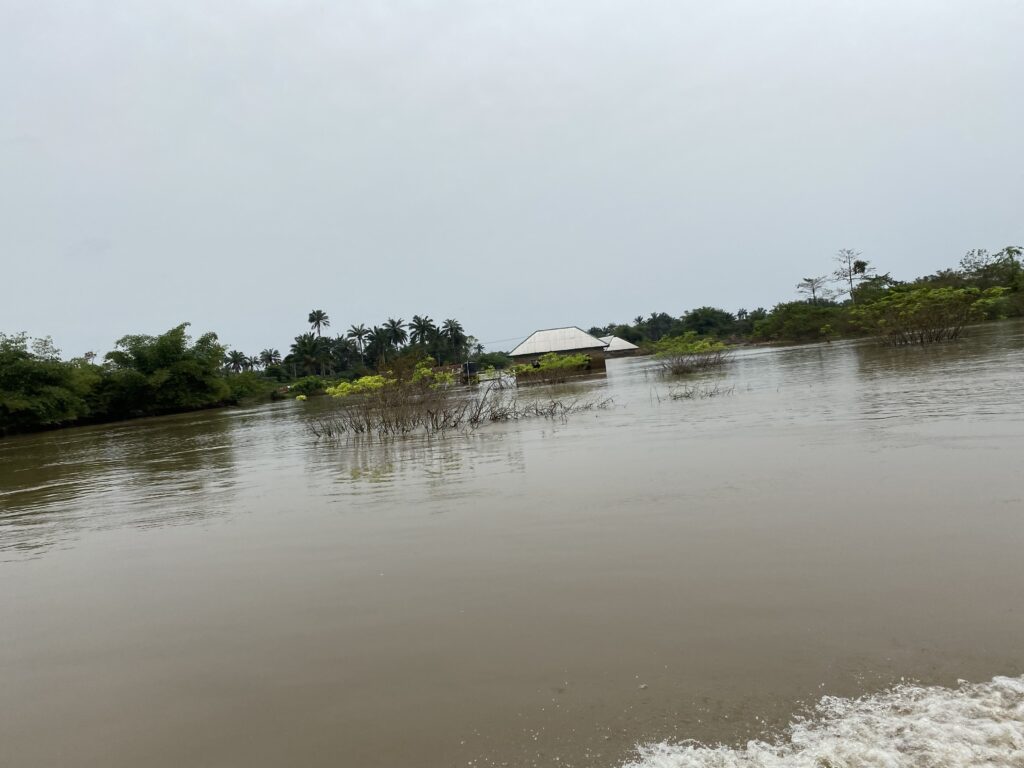
SURVIVING IN WATER
If the Beneku people had descended from any of the Amazonian tribes, they could have fared better during the deluge. The flood completely covered them, and they had no alternative but to adapt to their flood-infested surroundings. The water level was above the waist of a 6-feet-tall man. The people resorted to swimming and bathing in the water.
“It is miraculous that we are still alive. We bathe and swim in the toxic water. In a sense, we drink it,” said a Beneku resident who refused to give his name to FIJ. “Therefore, we are living by God’s grace. No one has had a course to visit the hospital. Floodwaters flooded the sole health centre in this area.”

Instead of blaming the government all day for not coming to their aid, many young men and elderly ladies resorted to fishing. The flood swept away various fish ponds in the state, making it easier to locate fishes in the many flooded places, including major roadways.
“This is also why there are no ladies around here. Many of them are trying to stay alive by hunting fishes. The cost of living is expensive, and the government ignores us,” a man said.
NO MORE FARMING BUT FAMINE
Enebeli Collins, an indigene of Beneku, who had abandoned his village to find a better life elsewhere, told FIJ that he had large farmlands with potatoes, plantains and cassava but lost it all to the flood.
Because of the floods, there will be a terrible famine in the communities of Ndokwa East and West in the state the following year, this reporter learnt. Beneku and some other communities in Ndokwa East are known for their plantain, peppers, and tomatoes. But only a few can present these farm products after the flood wreaked havoc on people’s farmlands.
“Not only has the flood ruined our farmland, but it has also left us starving. It swept away our goods, and our farmlands are now incapable of producing anything. We must manage what we have left while keeping an optimistic outlook on the future,” he stated.
“Now, residents of Kwale are suffering the effects of the flood, as the price of food, such as a bunch of plantains, has soared. This is because producers must eat what they create, while those who can afford to sell inflate prices in response to food scarcity.”
GARRI GONE
Engineer Destiny Ogbu of the Beneku community said the flood was sudden. In a short while, he lost almost everything on his cassava and plantain plantations. He could not estimate his loss because the land on which he farmed belonged to every member of his family.
Several times, he would interrupt this reporter’s chat with lines that alluded to his loss. “Millions of naira were lost,” he would say.
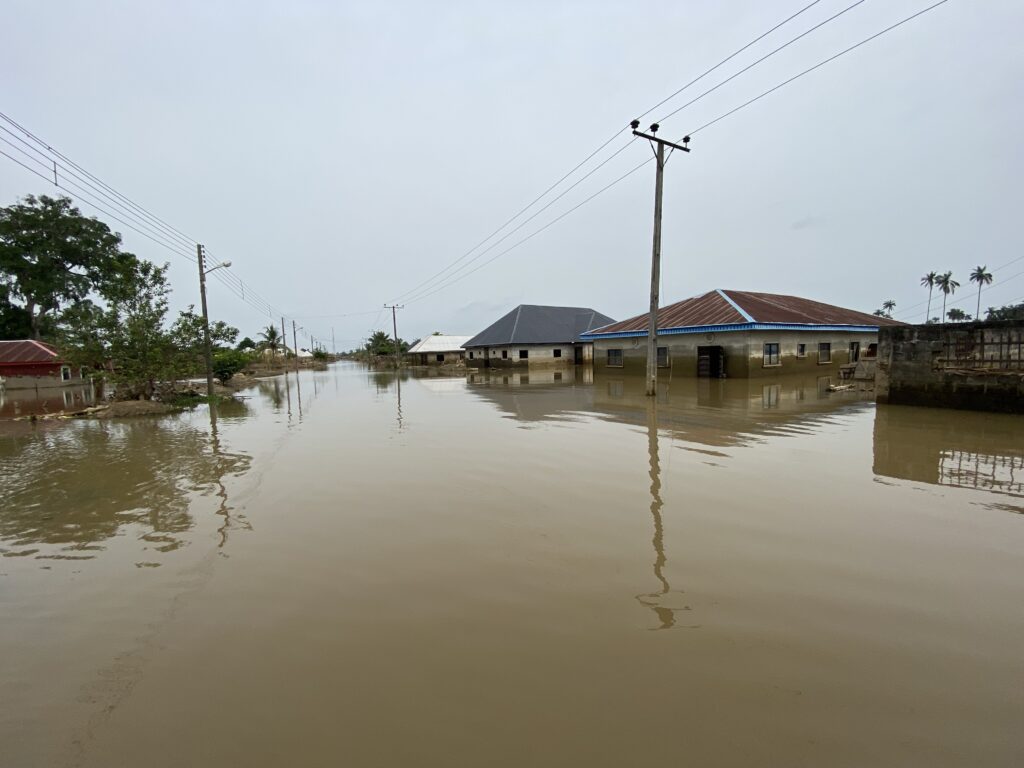
On October 1, Ogbu was on his farm harvesting what he could when he noticed an ankle-deep body of flowing water. As did other residents, he anticipated that the water would recede. Before he could return home that day, the water – now a full-blown flood – engulfed him from the waist down.
“We did a lot of rescuing and harvesting that day. Six days later, the flood had fully buried us. People had to run for their lives, leaving everything they had behind. No one was spared,” he recalled.
An aged farmer in the community who had harvested and processed his cassava into flakes hid his bags of garri in the ceiling before he fled the community, but the ravaging flood outmanoeuvred his wisdom.
“When the old man returned, he realised the flood had utterly covered his house,” he said.
He said the old man would never grant me audience if I saw him because he was still mourning his loss.
“Only a million naira at least would make him talk to you,” Ogbu said.
FARMING IS HARDER IN UMUCHIME
Even though farm owners in Umuchime, one of the seven quarters of Ogume in Ndokwa West, lost money because of the floods, the people still have to deal with ruined farmland and impassable roads.
The primary Umuchime-Ogume road leading to the village was inaccessible because of the four-foot-high water level. Water had covered the roads that led to the community’s farms, so farmers had to walk long distances instead of riding their bicycles or motorbikes to get there.
The flood did not severely affect Collins Origho, a resident of Umuchime-Ogume. His family’s house was safe, and his father’s farm was untouched, yet the flood would neither let them live nor die. The stress of going to the farm, he said, had quintupled.

The flood level was still high, and the route to the farm still shed tears caused by ravaging waters. If the road were tiled, it would have been a different kettle of fish. His bicycle would have made the journey to the farm easier. Farmers affected by the flood in Umuchime-Ogume were left with two options: allow their yam tubers and cassava plantations to rot away, which would spur famine next year, or go to the farm to harvest what they could and start replanting immediately after the flood receded.
Origho said most people were going to the farm despite the increased stress to save whatever they could. “But due to the flood, we have no buyers. Our community is famous for processing cassava, but despite the stress, we have to endure to get our goods. No one wants to take the risk of visiting a flooded place to buy goods,” Origho told FIJ.
“We’re in a camp covered by water. Our farms have been submerged. Next year, many of us will starve. Our community will suffer because we have no food. The signs are clear.”
SHUTDOWN IN ASHAKA
By the time this reporter arrived in Ashaka, a town in the Ndokwa East Local Government Area of Delta State, the flood was already winding down. However, there were still visible flood level markings on walls in some areas, and the ground bore witness to how far the flood stayed back before it receded. In some corners, the flood had washed the asphalt on the road away while the weeds by the roadside withered away.
The Mater Dei College Mixed School in Ashaka London still had marks that showed the severity of the flood in the community. Its fence had crumbled under the pressure of water ripples from boats transporting stranded commuters to other neighbouring communities at the Ashaka-Kwale road. The school was almost empty.
This was not the first time Mater Dei College would suffer from flooding. In 2018, a flood took over the college and its environs. This suspended academic activities in the school for three weeks. Like the 2022 situation, the fence of the college fell, and most of its students could not attend classes because the Kwale road was held to ransom by heavy flooding.
Wilson Arege, Mater Dei vice principal, told FIJ that his students were forced to vacate on October 4. They did not resume until October 31. When they reopened, less than 50 percent of the students took the first few classes.
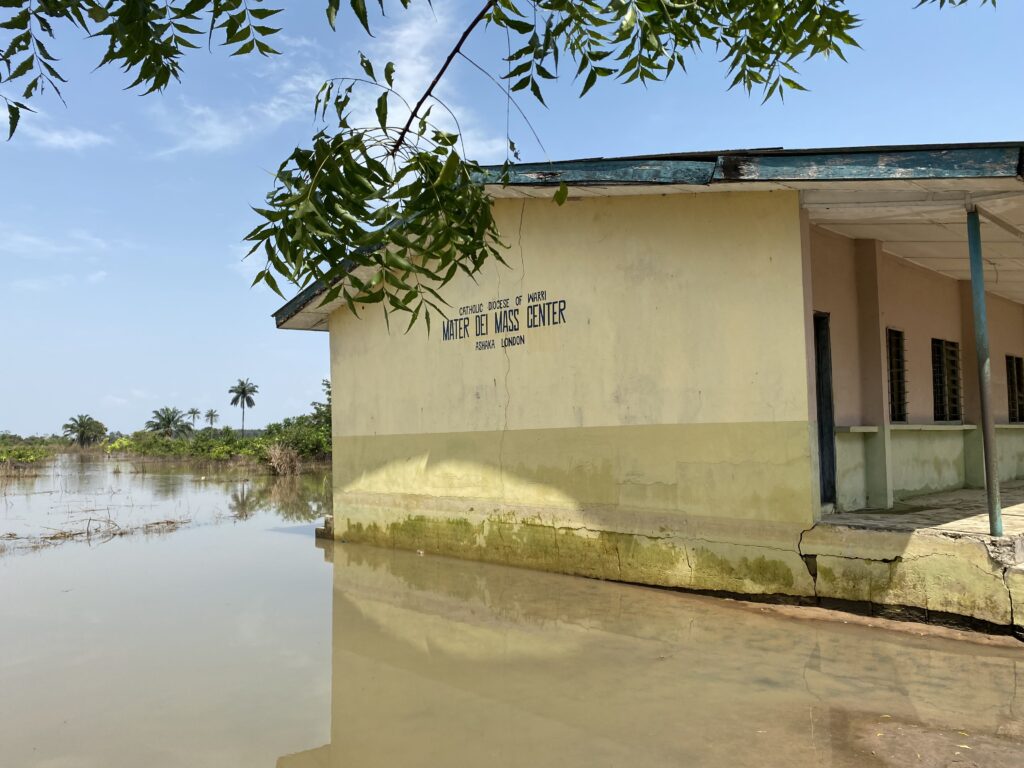
“Many of them cannot afford to resume because the flood badly hit their families. They are now displaced. They have to survive before they can think of education,” he said.
With many students absent from school, Agege said when his students fully resumed, the college would close for the day at 4 pm instead of 2 pm to cover up for the missed classes.
Due to the heavy flooding in Ashaka, many schools, especially government-established schools, were shut down. When this reporter went to the Ashaka Mixed Secondary School, it would have been as quiet as a graveyard if some corps members hadn’t been there for their monthly clearance.
The reporter encountered a unique situation at the Ozoma Ukwu Primary School in Ashaka. The ear-splitting sounds of generator sets and noise from children and women indicated that the state government had temporarily converted the school into a camp for Internally Displaced Persons (IDPs) affected by the flood.
HOUSING PROBLEMS IN KWALE
Bridget Izah is a landlady in Kwale. When this reporter approached her, she said she was tired of giving the media attention whenever the flood punished her for what she described as the government’s weaknesses.
The flood, up to window level, had overtaken half of her house. It also filled the interior of the building with water. Some of her belongings had been destroyed, but valuables such as television sets were hung high enough so that the flood could not affect them. Her tenants fled the house for their lives, but she continued to live in the building.
Due to the situation, agents had flagged her house as a danger zone for potential tenants.
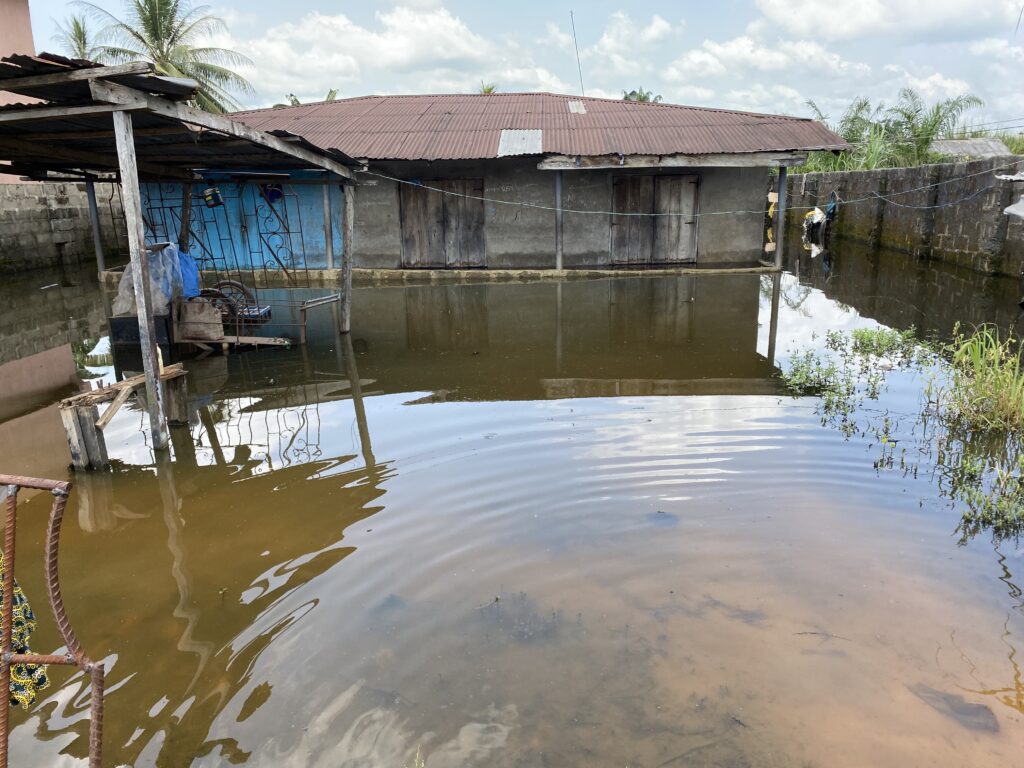
“I cannot leave my house. Anyone may leave, but not me. I have to survive,” she said.
“Many people no longer want to rent houses in this environment from people like me who are frequent victims of the flooding in Kwale. But the government can help us do something about it.”
N3,000 FOR HOUSING
People may not have expected the flood in Umunede, but Franklin, a teenager, and his family did, though they didn’t do much to avoid some of its consequences. This was why his family was the last to leave the village.
From television sets to other electrical appliances, his family could not save any household item. Also, they could not harvest any of their farm produce. Cassava, yams, and plantains were all washed away.
In what he described as hard times, his family now has to live in a small room close to Travellers’ Cave in Kwale, where they pay N3,000 monthly. He said the curiosity of finding out if the flood would be devastating left his family with nothing apart from a shattered life.
“People have left their home community for many places just to survive. Things are hard. No one wants to believe that everyone is a victim of the flood. Everyone is desperate. Some people have had to move from house to house because of the flood,” he told FIJ.
THIEVES ON THE PROWL
Before the flood hit Afor community, a woman in her fifties and named Comfort Bright had 14 portions of farmland where she grew healthy cassava and plantains. But after the flood, she only had land, but no farm. She is not bothered by what she lost on the farm, but by how her life turned out as the waters receded.
Her ordeal started when flood victims stormed her house to steal all the poultry she was rearing. As if that was not enough, the men in the community became wild and threatened to kill her dog to survive because they were hungry.
Understanding she would be the biggest loser, she sold her dog and used the money to tip some people who helped her harvest some of her cassava before it decayed under the ground. She worked tirelessly to save some of her farm produce, so she became weak and went into a coma.
“I fainted in the process of harvesting and processing my cassava. This was on October 24. My children are not here, so I have to work hard. All my body is vibrating because I worked so hard,” she said.
TWO STEPS AWAY FROM HELL
FIJ visited two of the ten IDP camps in the state to speak to victims: the IDP at Utagba-Ogbe in Kwale and Ozoma Ukwu Primary School in Ashaka. At the Utagba-Ogbe camp in Kwale, there were 3,539 IDPs. There were 777 children aged 1 to 5; 1,024 aged 6 to 12; and 658 aged 13 to 18. The number of men in the camp was 337, while there were 743 women, including 11 pregnant women and 66 lactating mothers.
FIJ observed that students of the Utagba-Ogbe Technical College were in session. Only a fragment of the college was used for the campers. Although this reporter was barred from speaking to any of the campers, one woman spoke of her own volition to this reporter outside the camp.
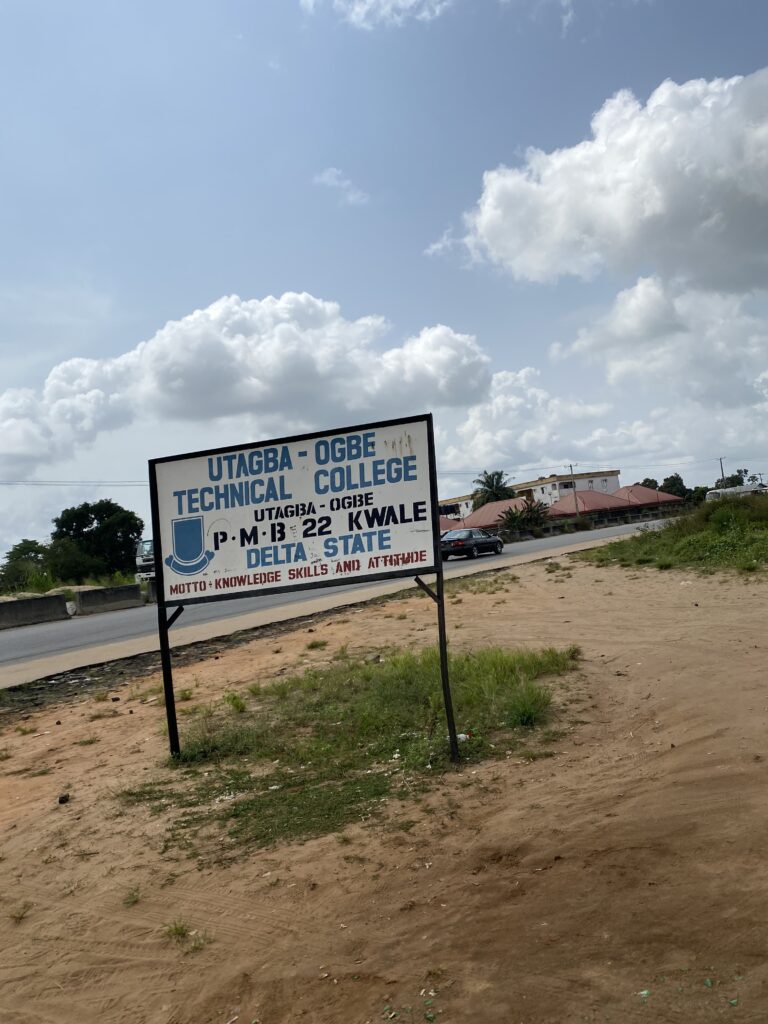
Margaret Osanebi* owns a booming fufu business at Umusedeli Quarter in Kwale. Her life was going fine until the flood forced her and her kids to the IDP camp in Utagba-Ogbe in Kwale. Now her life is a reversal of the privilege she enjoyed as an entrepreneur.
Mosquitoes feast on her flesh daily, and the camp is unbearable. The food, she said, was not good but she endured because she had no idea how to survive outside the camp, especially since her source of income had gone with the flood.
“All my processed food has gone. My property has been destroyed. All my efforts at surviving have vanished. What will I do? And the government will not help,” she said in a solemn tone.
LIFE IN ASHAKA CAMP
When FIJ went to the IDP camp at the Ozoma Ukwu Primary School in Ashaka, this reporter learned that 17 classrooms meant for the school’s students who had been moved elsewhere were full but not enough for the IDPs. There were 1847 campers, all from Ndokwa East.
It was a cloth-strewing compound with many women and a few men in sight. The splitting sounds of generator sets were loud. In the middle of the school premises, a canopy was erected. Local security men were underneath it, with one of them holding a local gun.
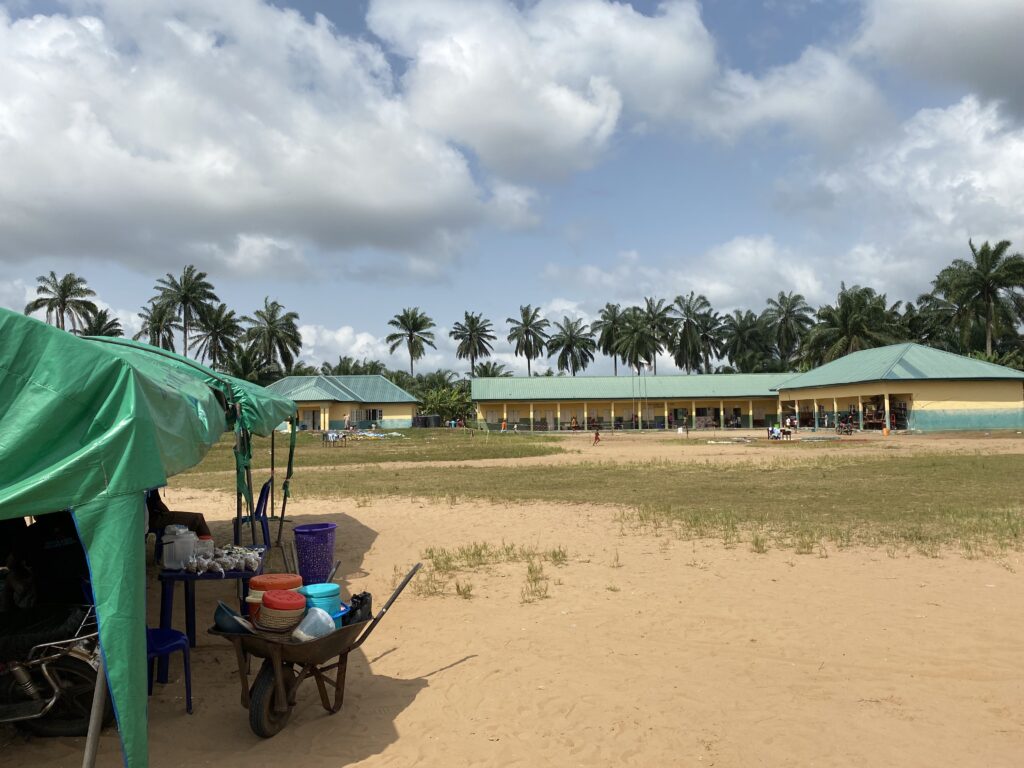
The leader of room one in the camp met this reporter and detailed her experience. The widowed middle-aged woman considered herself fortunate to be in the centre. She said that everything she could think of was given to her except clothes to put on.
While she admitted that the camp was not the best possible place for one to live, it afforded her the opportunity to think about how to tackle the evil that had befallen her family because of the flood.
“When I leave the camp, my children and I will see hell,” she told FIJ. “Even if I want to steal to provide for my kids, there’s nothing to steal because the flood has rendered everyone poor. My farmlands have been washed away. I’m starting at level zero once I leave here.”
LIVING IN BONDAGE
Prior to this reporter’s visit to Aboh in Ndokwa East Local Government, many people said that the once-devastating flood had retreated, and that life had returned to normal. But such reports were wide off the mark: the ghost of the flood was still haunting the community.
Emmanuel Odili, an Aboh born and raised, said the flood forced the community to become primitive. All schools and churches in the community had shut down. Until three weeks earlier, even his church, St. Peter’s Catholic Church, could not hold Mass, and when they did, only three people attended it.
As a result of a temporary exodus caused by the flood, he reported, the once-bustling settlement was now entirely deserted. Because of this and the lack of transportation, his oil and gas enterprise had been crippled.
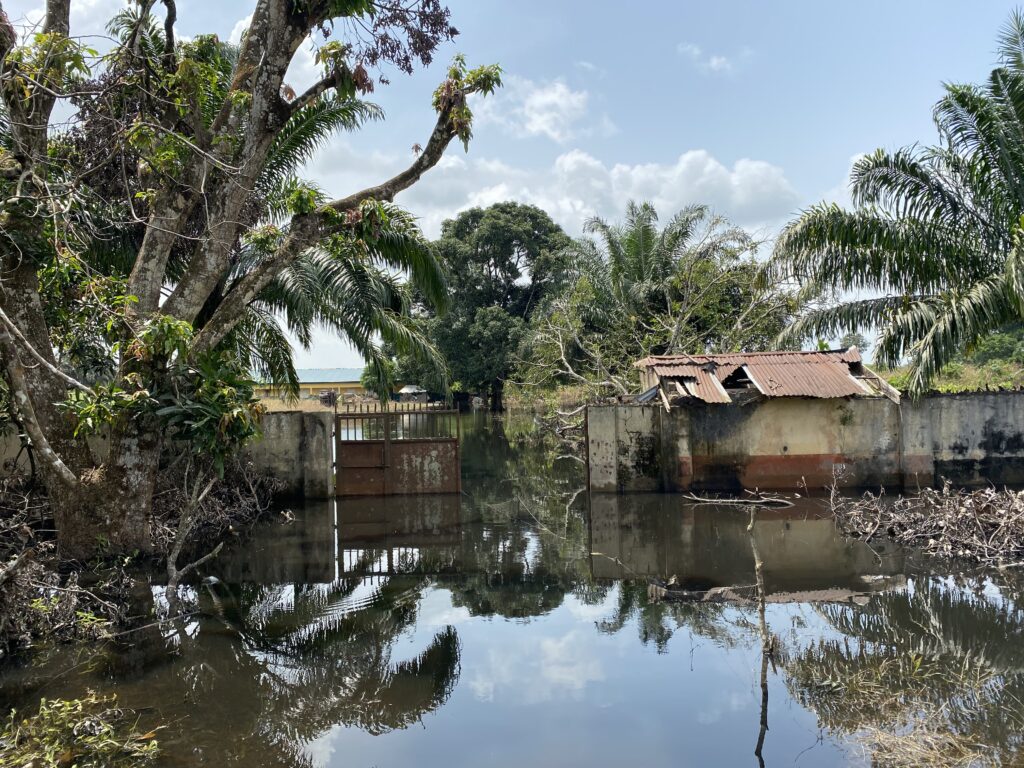
“The flood severely harmed us. The town is desolate. People had just returned to their homes to remove the remnants of the flood. There is no longer a road. People go from Kwale to Aboh by boat rather than by road. The road is also affected. We are still living in flood water and bondage.”
WHEN INACTION MEETS DISASTER
The 2022 flood has been blamed on intense rainfall, the opening of the Lagdo Dam and climate change, but not really on the lacklustre attitude of the Delta State Government, and by extension, the federal government.
Given that Delta State is highly prone to flooding, the people expected the heavy outpouring. Gordon Amangabara, a researcher, contended in 2015 that “two-thirds of Delta State was inundated by devastating floods for at least a quarter of each year”. Being one of the states predicted to be worst hit by flooding, one would expect the state government to be proactive in preventing the annual recurrence of the deluge, but such thoughts were wide of the mark.

In its N469.4 billion budget for 2022, N105.3 billion was earmarked for road and bridge infrastructure for the 2022 fiscal year. The sum of N7.5 billion each was earmarked for the Delta State Capital Territory Development Agency and the Warri/Uvwie and environs development in the proposed 2022 budget for road infrastructure and flood control. But despite what seemed to be a beautiful allocation of funds and resources, it seemed as though the state did not prepare forr the rainy days, as the flood made a mess of the state, sending people out of their houses and rendering them poor.
In fact, Clement Nze, the director of NIHSA, said that despite being warned eight months before the flood, state governments did nothing until it came as a shock.

“What did they do since February when they got the warnings to prepare themselves, except now that we are inside a flood? You can see activities all over the place?”
However, the issue of state governments failing to tackle floods after being warned is not exclusive to Delta alone. This is because flooding is a national issue. Instead of state governments tackling the issue proactively, with the federal government playing its part effectively to mitigate the usual flooding in riverine areas, the government focuses on the aftermath of the issue on a surface level.
STATE GOVERNMENT RESPONSE TO FLOODING
Apart from the direct response to the flooding crisis, such as the establishment of IDP camps and the disbursement of funds to flood victims in some areas, the Delta State government has done nothing to address the core causes of flooding in the state.
Eugene Uzum, a member of the 2022 Flood Disaster Management Committee, said the Delta State “government is also looking at temporary and permanent solutions to this reoccurring disaster by highlighting the need to build more dams to complement the Kanji and Shiroro dams, which will help to absorb excess water during the rainy seasons and could also be used in the country for irrigation farming during the dry seasons”.
HOW TO CONTROL NIGERIAN FLOODS
Even if these suggestions seem to be reasonable, there are other precautions that could be taken to avoid future floods in Nigerian riverine communities. Environmentalist Martha Agbani thought that deforestation, besides the ocean’s increasing level, was also to blame for floods.
Nigeria had 10.9 million hectares of natural forest in 2010, covering over 12 percent of its total land area. It lost 96,500 hectares of natural forest in 2021, which is equal to 65.3 Mt of CO2 emissions. As a result, there is nothing to absorb the water.
Michael Simire, an environmentalist, said that the Nigerian government should be proactive about flooding, which he said partly resulted from climate change, in order to stop it for good.
He said the drainage systems were poor and could not cope with intense rainfall. Simire believed that if the Nigerian government was proactive in the battle against floods, it would complete the Dasim Hausa Dam.
“Water ought to flow where it is supposed to. My opinion is that we have not fulfilled our end of the bargain. We will be able to somewhat avert floods in Nigeria if we finish the Dasim Hausa Dam project,” he claimed.
A deal between Cameroon and Nigeria called for the construction of two dams so that when water is released from the Cameroonian Lagdo Dam, it would be contained by the Nigerian dam and wouldn’t result in a flood.
But the Nigerian government has not finished constructing the Dasin Hausa Dam since 1982. As a result, if the Cameroonian government releases much water from the Lagdo Dam, villages in the north-eastern states of Rivers, Bayelsa, Delta, Edo, Anambra, Kogi and Benue get flooded.
Simire also said that early warning systems set up by the federal government and state governments would lessen the effects of floods that cause natural disasters because people could prepare for them.
The Nigerian Meteorological Agency (NIMET) has said that flooding in 2023 would be worse than it was in 2022. Because of this, the governor of Delta State, Ifeanyi Okowa, has asked the federal government to act right away to make sure that the River Niger and River Benue are dredged and that holding dams are built to stop flooding in Nigeria.
This story was published with development support from the Open Society Initiative for West Africa (OSIWA)
Subscribe
Be the first to receive special investigative reports and features in your inbox.


